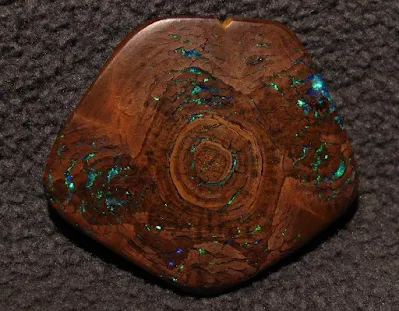Opalized Wood Fossil
Opalized wood fossil, also known as wood opal, is a truly captivating natural wonder. It forms when wood becomes buried in sediment and undergoes a process of petrification, where the organic matter is gradually replaced by silica-rich minerals, most often opal. This transformation preserves the wood's intricate structure and grain, while infusing it with the mesmerizing play of color characteristic of opal.
Opalized Wood Formation
Petrifaction: The wood is first buried by sediment, which protects it from decay. Minerals, primarily silica, seep through the buried wood and replace its organic matter, molecule by molecule.
Opalization: Under certain conditions, the silica can take the form of opal, a hydrated amorphous form of silica known for its mesmerizing play of color. This occurs when the silica-rich solution undergoes fluctuations in temperature and pressure.
Opalized Wood Properties and Appearance
Play of color: Opalized wood fossils exhibit a breathtaking array of colors, including blue, green, orange, red, and yellow. The specific colors depend on the size and arrangement of silica spheres within the opal.
Preservation: The wood's original grain, texture, and even microscopic details are often remarkably preserved, creating a fascinating contrast between the petrified wood and the shimmering opal.
Hardness and durability: Opalized wood fossils are surprisingly hard and durable, making them popular for jewelry, carvings, and other decorative purposes.










